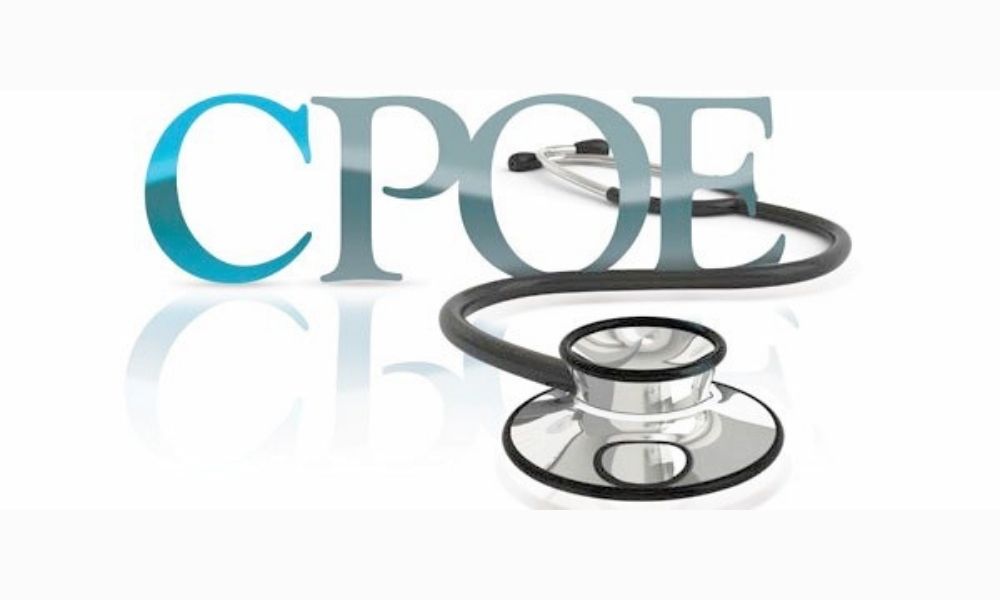Computerized Physician Order Entry (CPOE) is a digital system that allows healthcare providers to enter medical orders electronically, replacing the traditional paper-based method. This technology has been gaining popularity in recent years, with more and more healthcare facilities implementing it in their daily operations. CPOE has been proven to bring numerous benefits to both patients and healthcare providers, making it an essential tool in modern healthcare. In this article, we will explore the various benefits of CPOE and how it is transforming the healthcare industry.
Contents
Improved Patient Safety
One of the most significant benefits of CPOE is its ability to improve patient safety. With the traditional paper-based method, there is a high risk of errors occurring during the ordering process. Illegible handwriting, misinterpretation of orders, and incorrect dosages are just some of the common errors that can happen. These errors can have severe consequences, such as adverse drug events, medication errors, and even patient harm or death.
CPOE eliminates these risks by providing a standardized and legible platform for healthcare providers to enter orders. The system also has built-in safety checks, such as drug interaction alerts and allergy warnings, to prevent errors from occurring. These safety features help to reduce the number of medication errors and improve patient outcomes.
Read:How can a nation benefit from effectively exporting its goods?For example, a study published in the Journal of the American Medical Informatics Association found that implementing CPOE reduced medication errors by 55% and adverse drug events by 17%. This shows the significant impact that CPOE can have on patient safety and the importance of implementing this technology in healthcare facilities.
Increased Efficiency and Productivity
Another benefit of CPOE is its ability to streamline processes and increase efficiency and productivity. With the traditional paper-based method, healthcare providers have to manually write and process orders, which can be time-consuming and prone to errors. CPOE automates this process, allowing orders to be entered and processed electronically, saving time and reducing the risk of errors.
CPOE also eliminates the need for healthcare providers to decipher illegible handwriting, reducing the time spent on clarifying orders. This allows them to focus on other essential tasks, such as patient care. Additionally, CPOE can integrate with other electronic health record (EHR) systems, allowing for seamless communication and sharing of patient information between different healthcare providers. This further improves efficiency and productivity, as healthcare providers can access all the necessary information in one place.
According to a study published in the Journal of the American Medical Association, implementing CPOE resulted in a 13% reduction in the time spent on order entry and a 14% increase in the time spent on direct patient care. This shows how CPOE can free up healthcare providers’ time, allowing them to focus on providing quality care to their patients.
Read:Which benefit results from making informed healthcare decisions?Cost Savings
CPOE can also bring significant cost savings to healthcare facilities. With the traditional paper-based method, there is a high risk of errors occurring, which can lead to additional costs, such as reordering medications or treating adverse drug events. CPOE’s safety features help to reduce these errors, resulting in cost savings for healthcare facilities.
Additionally, CPOE can also help to reduce the amount of paper and supplies used in the ordering process, leading to cost savings for healthcare facilities. A study published in the Journal of the American Medical Informatics Association found that implementing CPOE resulted in an annual cost savings of $1.5 million for a 500-bed hospital. This shows the significant impact that CPOE can have on reducing costs and improving the financial sustainability of healthcare facilities.
Improved Communication and Coordination
CPOE also improves communication and coordination between healthcare providers, leading to better patient care. With the traditional paper-based method, there is a risk of orders getting lost or misinterpreted, leading to delays in patient care. CPOE eliminates this risk by providing a centralized platform for healthcare providers to enter and access orders.
CPOE also allows for real-time communication between healthcare providers, allowing them to collaborate and make informed decisions about patient care. This is especially beneficial in emergency situations, where quick and accurate communication is crucial. CPOE also allows for remote access, meaning healthcare providers can access and enter orders from anywhere, improving coordination and efficiency.
Read:What age for full social security benefits: All you need to knowFor example, a study published in the Journal of the American Medical Informatics Association found that implementing CPOE resulted in a 30% reduction in the time taken to process orders and a 50% reduction in the time taken to communicate orders. This shows how CPOE can improve communication and coordination between healthcare providers, leading to better patient care.
Enhanced Data Collection and Analysis
CPOE also allows for enhanced data collection and analysis, providing valuable insights for healthcare facilities. With the traditional paper-based method, it can be challenging to collect and analyze data on orders and medication usage. CPOE automates this process, allowing for accurate and real-time data collection.
This data can be used to identify trends and patterns in medication usage, helping healthcare facilities to make informed decisions about their ordering processes. It can also be used to track and monitor patient outcomes, allowing for continuous improvement in patient care. Additionally, CPOE can integrate with other systems, such as EHRs, allowing for a comprehensive view of patient data.
For example, a study published in the Journal of the American Medical Informatics Association found that implementing CPOE resulted in a 50% increase in the number of medication errors identified and a 60% increase in the number of adverse drug events identified. This shows how CPOE can provide valuable data for healthcare facilities to improve patient care and safety.
Real-World Examples of CPOE Implementation
Many healthcare facilities have already implemented CPOE and have seen significant improvements in patient care and processes. One such example is the Children’s Hospital of Pittsburgh, which implemented CPOE in 2002. The hospital saw a 90% reduction in medication errors and a 50% reduction in the time taken to process orders. This resulted in significant cost savings and improved patient outcomes.
Another example is the University of Pittsburgh Medical Center (UPMC), which implemented CPOE in 2005. The hospital saw a 70% reduction in medication errors and a 50% reduction in the time taken to process orders. This resulted in an estimated cost savings of $1 million per year.
Conclusion:
CPOE is a valuable tool in modern healthcare, bringing numerous benefits to both patients and healthcare providers. It improves patient safety, increases efficiency and productivity, brings cost savings, improves communication and coordination, and allows for enhanced data collection and analysis. Real-world examples have shown the significant impact that CPOE can have on improving patient care and streamlining processes. As technology continues to advance, we can expect to see even more benefits from CPOE in the future.
In conclusion, CPOE is not just a digital replacement for the traditional paper-based method; it is a transformative technology that is revolutionizing the healthcare industry. Its benefits are undeniable, and it is essential for healthcare facilities to consider implementing CPOE to improve patient care and processes. With the right implementation and training, CPOE can bring significant improvements to the healthcare industry, making it a valuable investment for the future.









